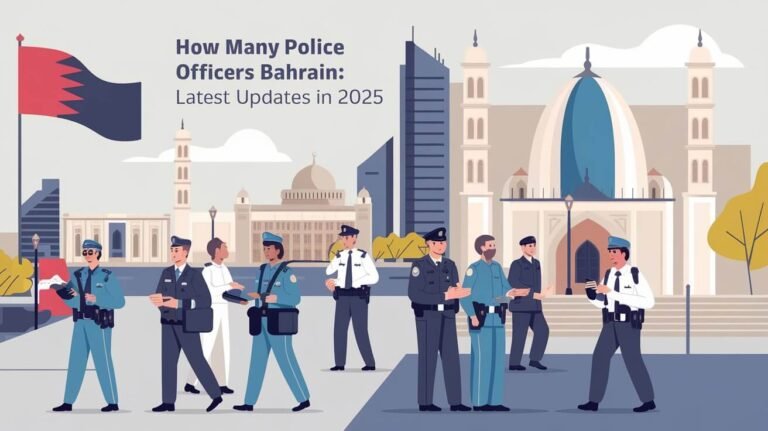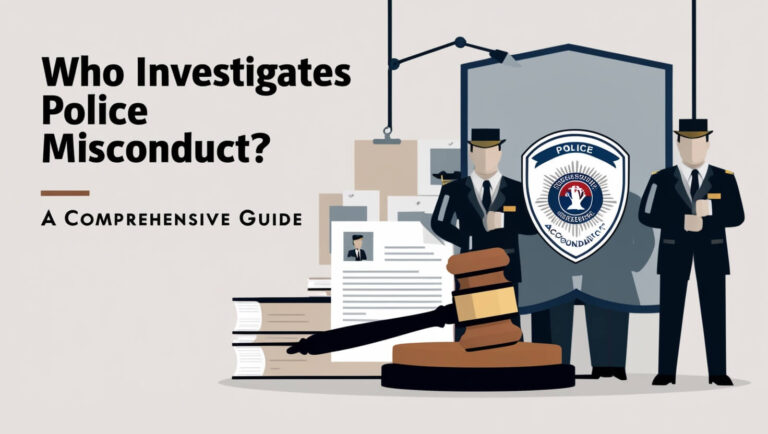What is Police Reform? A Guide to Law Enforcement Changes

Fixing police work is vital to make cops and people get along better. Police reform changes rules and habits in police groups. It aims to make police more open, do less bad stuff, and help folks more. This write-up talks about what police reform is, why it matters, and how it might change things for all of us.
Defining Police Reform
The Core Concept of Police Reform
At its heart, police reform aims to address systemic issues within law enforcement. It’s not just about fixing a few bad apples; it’s about reimagining how policing works in our communities. Police reform efforts seek to create a more just, equitable, and effective system of public safety.
Reform can take many shapes:
- Changing use-of-force policies
- Improving officer training
- Increasing transparency and accountability
- Promoting community-oriented policing strategies
These changes aim to reduce instances of police misconduct and brutality while fostering better relationships between law enforcement and the public they serve.
Goals and Objectives of Police Reform Efforts
The main goals of police reform include:
- Reducing excessive use of force
- Eliminating racial bias in policing
- Improving police accountability
- Enhancing community trust in law enforcement
- Ensuring officer safety and well-being
By focusing on these objectives, reformers hope to create a police force that protects and serves all members of society equally and effectively.
The Need for Police Reform
Historical Context of Policing Issues
Policing in America has a complex history, often intertwined with issues of race and class. From the slave patrols of the antebellum South to the civil rights era, law enforcement has sometimes been used as a tool to maintain social hierarchies rather than protect all citizens equally.
This historical context continues to shape perceptions of police today, especially in minority communities. Understanding this history is crucial for implementing meaningful reform.
Recent Events Sparking Reform Movements
High-profile incidents of police brutality have thrust the need for reform into the national spotlight. The deaths of individuals like George Floyd, Breonna Taylor, and many others have sparked widespread protests and calls for change.
These events have highlighted long-standing issues in policing and have created a sense of urgency around reform efforts. They’ve also sparked important conversations about the role of police in society and how to ensure public safety while protecting civil liberties.
Statistics on Police Misconduct and Use of Force
Numbers tell a powerful story about the need for police reform:
- According to the provided data, police in the U.S. kill approximately 1,000 people each year.
- In 2022, police killed people on 355 out of 365 days.
- There’s a significant racial disparity in police killings. For example, the Chicago Police Department kills black people at a rate of 8.6 per million versus white people at 0.3 per million.
These statistics underscore the urgent need for comprehensive police reform to address these serious issues.
Key Areas of Police Reform
Accountability and Transparency Measures
One of the cornerstones of police reform is increasing accountability and transparency. This includes:
- Implementing body-worn cameras
- Creating civilian oversight boards
- Improving internal affairs processes
- Making disciplinary records public
These measures aim to deter misconduct and build public trust by ensuring that police actions are open to scrutiny.
Training and Education Improvements
Many reform efforts focus on enhancing police training. This can include:
- De-escalation techniques
- Implicit bias training
- Crisis intervention for mental health calls
- Cultural sensitivity training
Better training can help officers make better decisions in high-stress situations and improve interactions with diverse communities.
Community Policing Initiatives
Community policing is a strategy that emphasizes building relationships between police and community members. It involves:
- Regular community meetings
- Foot patrols to increase positive interactions
- Youth programs run by police
- Collaborative problem-solving with community members
These initiatives aim to foster trust and cooperation between police and the communities they serve.
Use of Force Policies and De-escalation Techniques
Reforming use of force policies is a critical aspect of police reform. This often includes:
- Banning certain tactics like chokeholds
- Requiring de-escalation attempts before using force
- Implementing a duty to intervene when officers witness excessive force
- Mandating comprehensive reporting of all use of force incidents
These changes aim to reduce unnecessary violence and ensure force is used only as a last resort.
Diversity and Inclusion in Law Enforcement
Increasing diversity within police departments is another key reform goal. This involves:
- Recruiting more officers from minority communities
- Promoting diversity in leadership positions
- Creating inclusive workplace cultures
- Implementing bias-free hiring practices
A more diverse police force can better understand and serve diverse communities.
Police Reform Legislation and Policies
Federal-Level Police Reform Efforts
At the federal level, several reform efforts have been proposed or implemented:
- The George Floyd Justice in Policing Act, introduced in 2021, aimed to increase accountability for law enforcement misconduct and enhance transparency through data collection.
- Executive orders have been issued to improve policing practices and accountability at the federal level.
- The Department of Justice has increased its use of pattern-or-practice investigations into police departments with systemic issues.
While comprehensive federal legislation has yet to pass, these efforts show a growing recognition of the need for reform at the national level.
State and Local Reform Initiatives
Many states and cities have taken the lead on police reform:
- Several states have banned or restricted no-knock warrants following the death of Breonna Taylor.
- Some jurisdictions have implemented new use-of-force policies, requiring de-escalation and banning certain tactics.
- Cities like Camden, New Jersey have completely restructured their police departments.
These local efforts often serve as laboratories for reform, testing new approaches that could be adopted more widely.
Examples of Successful Police Reform Implementation
While reform is an ongoing process, some jurisdictions have seen positive results:
- In Camden, NJ, violent crime dropped by 42% after the police department was disbanded and rebuilt with a community-policing focus.
- Seattle’s crisis intervention training has led to a significant decrease in use of force against individuals in crisis.
- The New Orleans Police Department, under a federal consent decree, has seen improvements in community trust and reductions in use of force.
These success stories provide valuable lessons for other jurisdictions considering reform.
Challenges in Implementing Police Reform
Resistance to Change Within Law Enforcement
One of the biggest hurdles to police reform is resistance from within law enforcement itself. This can manifest as:
- Police unions opposing new accountability measures
- Individual officers resisting new training or policies
- Department leadership being slow to embrace change
Overcoming this resistance often requires a combination of strong leadership, community pressure, and sometimes external oversight.
Funding and Resource Allocation Issues
Implementing meaningful reform often requires significant resources:
- New training programs can be expensive
- Technology like body cameras comes with ongoing costs
- Community policing initiatives may require hiring more officers
Balancing these costs with other budgetary needs can be challenging, especially for smaller jurisdictions.
Balancing Public Safety and Civil Liberties
Reform efforts must navigate the delicate balance between ensuring public safety and protecting individual rights. This involves:
- Crafting policies that allow police to do their jobs effectively while respecting civil liberties
- Addressing community concerns about over-policing without compromising safety
- Ensuring new technologies don’t infringe on privacy rights
Finding this balance is crucial for creating reforms that are both effective and just.
The Impact of Technology on Police Reform
Body Cameras and Their Role in Accountability
Body-worn cameras have become a central part of many reform efforts:
- They provide objective evidence of police-citizen interactions
- Their presence can deter misconduct and de-escalate tense situations
- Footage can be used for training and improving policies
However, challenges remain around privacy concerns, data storage, and when cameras should be activated.
Data-Driven Policing and its Implications
Many departments are turning to data analytics to inform their practices:
- Predictive policing algorithms aim to deploy resources more effectively
- Early intervention systems try to identify officers at risk of misconduct
- Data analysis can reveal patterns of racial disparities in enforcement
While these tools hold promise, they also raise concerns about privacy and the potential to reinforce existing biases.
Social Media’s Influence on Police Reform Movements
Social media has played a crucial role in recent reform movements:
- Videos of police misconduct can quickly go viral, sparking outrage and calls for change
- Activists use social platforms to organize protests and share information
- Police departments increasingly use social media for community engagement and transparency
This digital landscape has fundamentally changed how the public interacts with and scrutinizes law enforcement.
Community Involvement in Police Reform
Citizen Oversight Committees
Civilian oversight boards are a key reform measure:
- They provide independent review of police conduct
- They can investigate complaints and recommend disciplinary action
- They serve as a bridge between the community and the police department
Effective oversight requires real power and independence to make meaningful change.
Grassroots Movements and Activism
Community activism has been a driving force behind many reform efforts:
- Protests have brought national attention to issues of police brutality
- Local groups have pushed for policy changes in their communities
- Activists have run for office on platforms of police reform
These grassroots efforts have been crucial in maintaining pressure for change.
Building Trust Between Police and Communities
Ultimately, successful reform requires rebuilding trust between police and the communities they serve:
- Community policing initiatives aim to foster positive interactions
- Transparency measures help communities feel heard and respected
- Cultural competency training helps officers better understand and serve diverse populations
Building this trust is a long-term process that requires commitment from both law enforcement and community members.
The Future of Police Reform
Emerging Trends in Law Enforcement Changes
As reform efforts continue, several trends are emerging:
- Increased focus on mental health response, with some cities creating non-police crisis response teams
- Growing interest in restorative justice approaches as alternatives to traditional policing
- Exploration of co-responder models, pairing officers with social workers or mental health professionals
These trends suggest a broader reimagining of public safety beyond traditional policing models.
Potential Long-Term Effects of Reform Efforts
While the full impact of current reform efforts will take time to assess, potential long-term effects could include:
- Reduced instances of police violence and misconduct
- Improved community-police relations, especially in minority communities
- More effective and equitable law enforcement practices
- A shift in societal understanding of public safety and the role of police
The success of these outcomes will depend on sustained commitment to reform and willingness to adapt as we learn what works.
Ongoing Debates and Controversies in Police Reform
Several key debates continue to shape the reform landscape:
- The role of police unions in reform efforts
- The appropriate level of funding for police departments
- The extent to which certain police functions should be shifted to other agencies
- The balance between officer discretion and strict policy guidelines
These debates highlight the complex nature of police reform and the need for nuanced, context-specific solutions.
Conclusion: The Ongoing Journey of Police Reform
Police reform is not a destination, but an ongoing process of improvement and adaptation. It requires commitment from law enforcement agencies, policymakers, and communities alike. While challenges remain, the growing momentum for change offers hope for a future where policing is more just, effective, and trusted by all members of society.
As we continue on this journey, it’s crucial to remain engaged, informed, and willing to have difficult conversations about the role of law enforcement in our communities. By working together, we can create a system of public safety that truly serves and protects all.






